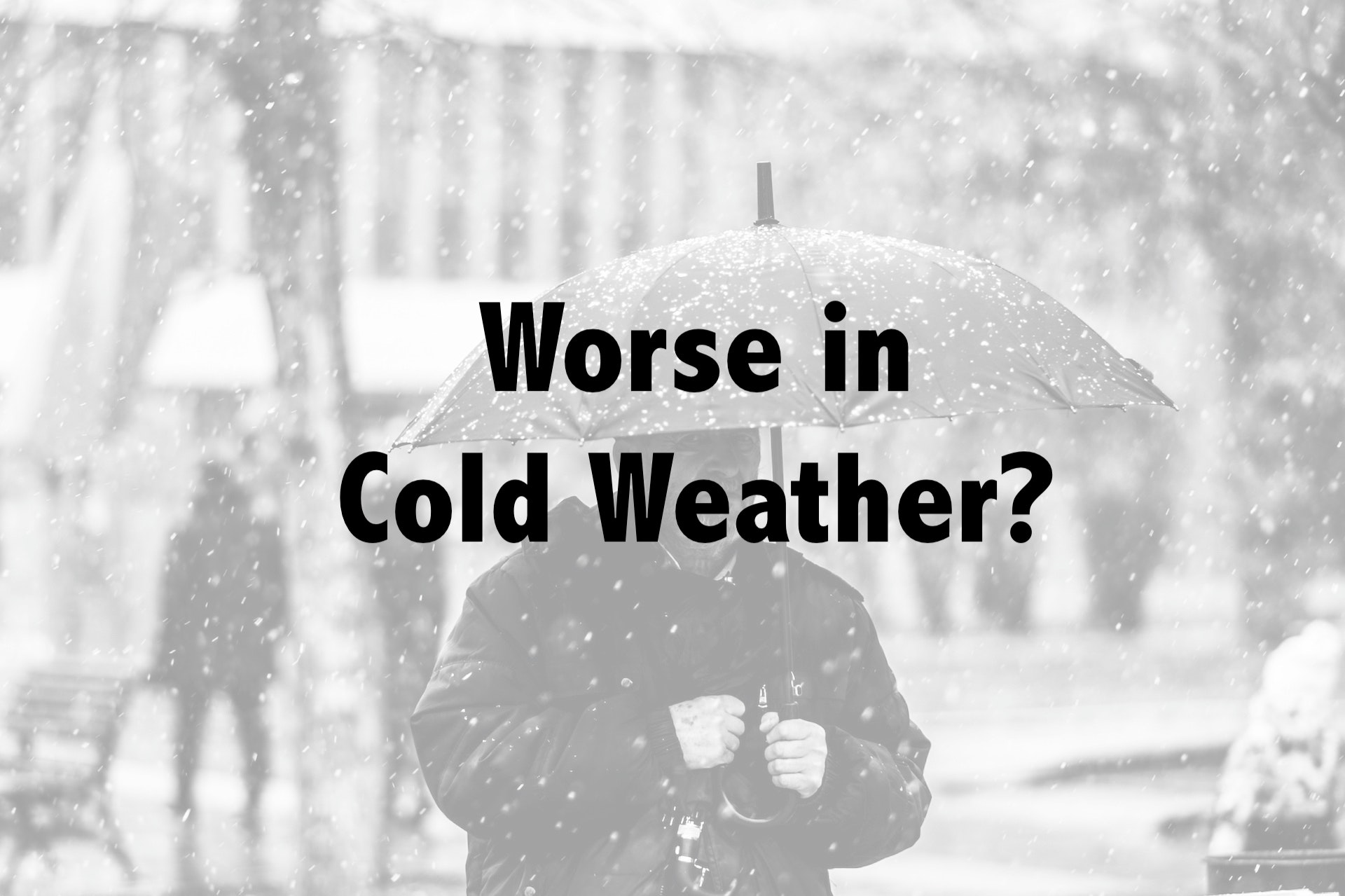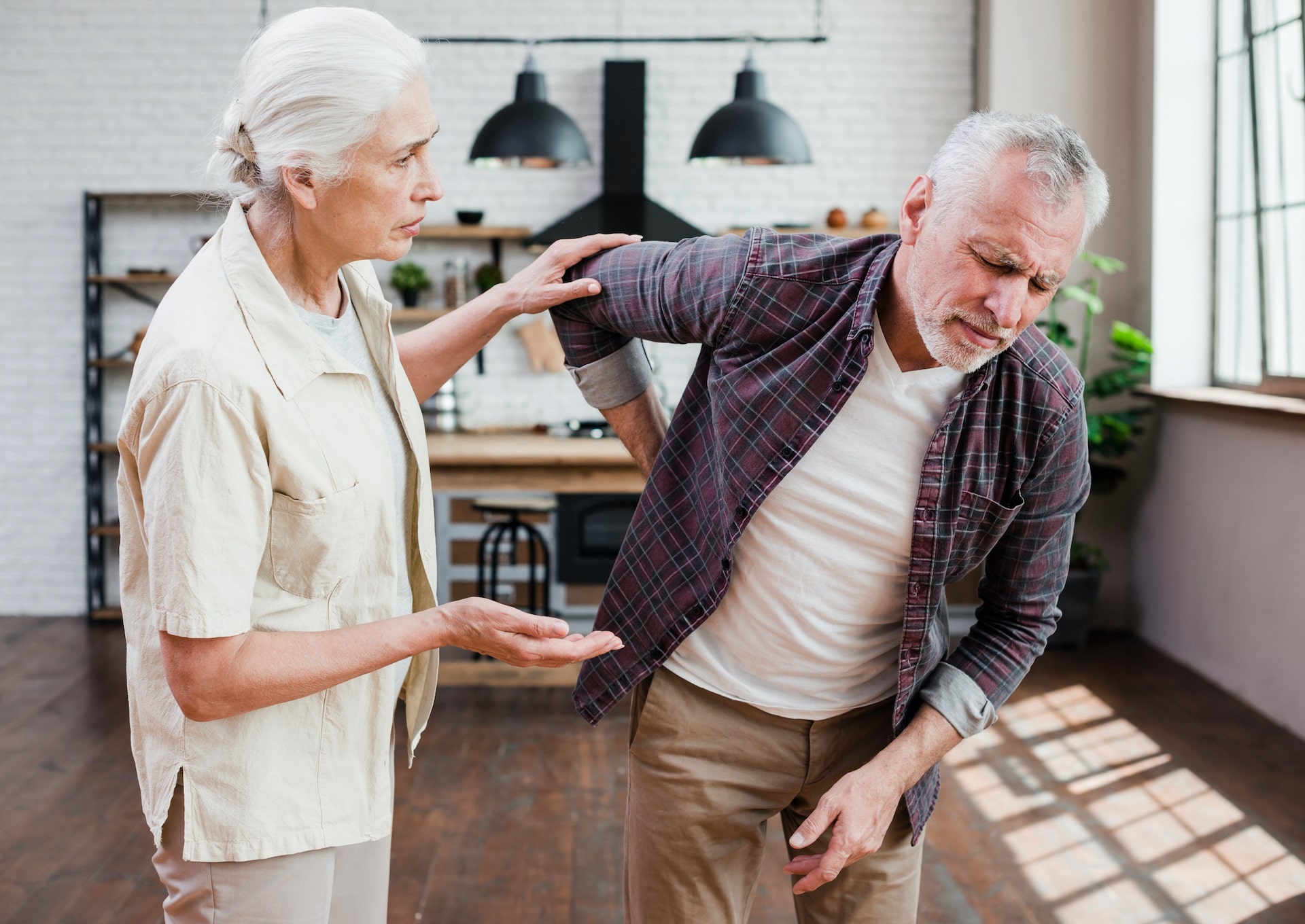When a Storm is Brewing: A Plano Resident’s Guide to Barometric Pressure Migraines
Living in Plano, you know the weather changes. Sudden storms and fronts cause barometric pressure migraines. Get help for the headaches and throbbing pain.

February 2, 2023
When it’s cold outside, like today in Dallas, I see more patients complain about their back pain. My patients usually say, “Oh, my back hurts whenever it’s cold outside or raining.”
You may want to know if something out there can help you or a loved one aggravate or complain about low back pain when the weather is cold or rainy.
Understanding how and why you have more pain in cold weather is the first step to mitigating your low back pain.
People who are looking for alternative solutions to their chronic low back pain often fall into three categories:
Regardless of the path that’s led you here, I’d like to teach you 4 tips to manage your low back pain and the complications that come along with it.
We understand this can be a lot of information and overwhelming: if you are looking for more support and answers, set up a free consultation with our Sciatica Specialist, Satoru Ozawa. Share your story, get your questions answered, and learn how you can set yourself up for tremendous success in achieving a healthy life.
M - F: 8am - 6pm Sat & Sun: 10am-3pm

According to a Survey published in Jornal pain, 2/3 of people with chronic low back pain and living in San Diego, Nashville, Boston, Worcester, and Massachusetts checked and compared the correlation between their pain and weather changes. And they found out that the group with lower barometric pressure tends to have more pain than those who live in high temperatures with higher barometric pressure. Dr. Steven Graff-Radford from Los Angeles explained that the research showed that barometric pressure change and humidity and temperature affect the brain that blocks pain. Overcast, cloudy, rainy days produce more pain.
In cold weather, the blood flow in the body will be slower, the metabolism will be slower, and the muscle will be tight up—people who already have low back pain often tighten up the muscle quickly and produce pain.
You should learn what wind-cold-damp syndrome is. Still, in traditional Chinese medicine, the medicine often explains the disease manifesting as nature. At this time, Wind and cold dampness obstruct the meridians.
But, people with weak protective every called Wei-Qi, easily obstructed by wind-cold-damp in cold weather.
If it’s cold, warm it up. It’s straightforward. In America, most people only shower, but I recommend a hot bath every night. In Japan, the research compared 38 people who only took a shower and bath for two weeks. After the study, there were significantly better results for the group who took a bath, lowering their stress, pain, and fatigue, than the group who only took a shower. Taking a bath increases blood flow and supplies oxygen and nutrients to the limbs.
Even though it’s cold outside, you can’t just sit on the couch and watch the tv. If you do that, the muscle gets tight up even more. The more you move your muscles, the more you relieve the tightness. Even slow walking or low resistance training or exercise like squatting without the weight can help move the blood flow to release the pain.
In traditional medicine, the pain aggravates due to the weather changes, often obstructed by Wind-cold-dampness in the meridians and channels. In order to prevent doing so, you can nourish your Wei-Qi by eating a certain food or taking natural Chinese herbs. Wei-Qi is the protective energy that protects your body from outside factors like cold, heat, wind, dampness, etc.
Ginger is one of a kind of turmeric. The research shows ginger’s functions are anti-oxidant, anti-inflammatory, etc. This plant is characteristic of warming the body, so eating gingers helps warm bodies and reduces inflammation of body parts that you have weakened.
This formula is one of the major classical formulas to supplement spleen and stomach Qi and raise yang.
The principal herb is Astragalus root and Ginseng root. Astragalus is one of the best single Chinese herbs to the tonic, anti-oxidants herb, containing more than 100 compounds. The other significant herb is Ginseng root, and these combinations of compounds work to nourish and boost Wei energy.
Ingredients:
Acupuncture is very effective for low back pain. We examined your low back and muscle tightness during the initial acupuncture session. You may be unable to bend forward or lean back due to pain. The treatments focused on reducing inflammation and swelling and restoring movement in the low back. Acupuncture has been shown in many studies to be incredibly practical in reducing pain and inflammation due to its ability to stimulate the body to release its natural painkillers. So, you start feeling relieved from the pain after each session.
As a general rule of thumb, the sooner one receives treatment, the better the prognosis.
Some patients come for low back pain treatment months or even years after the initial onset. These chronic cases are often more complex and take much longer to achieve results. Even then, recovery is not guaranteed.
Regarding the frequency of treatments, acupuncture follows a simple rule. Acute and relatively new conditions are most effectively treated with frequent visits. In contrast, chronic and old conditions can benefit from more widespread treatments. In other words, if you just had an onset of sciatica, you will probably be prescribed 2-3 treatments per week in order to get the most effective results. Chronic cases will generally come in only once a week.
If you or a loved one suffer from low back pain due to weather changes and want to learn more about acupuncture and whether it’s appropriate for your case, send us a message through our contact page.
I hope it helps.
Satoru Ozawa, L.Ac, ATC
We understand this can be a lot of information and overwhelming: if you are looking for more support and answers, set up a free consultation with our Sciatica Specialist, Satoru Ozawa. Share your story, get your questions answered, and learn how you can set yourself up for tremendous success in achieving a healthy life.
Reference:
https://www.ncbi.nlm.nih.gov/pmc/articles/PMC6011066/
https://www.ncbi.nlm.nih.gov/books/NBK92775/
https://pubmed.ncbi.nlm.nih.gov/25087616/
https://pubmed.ncbi.nlm.nih.gov/24122014/
We'll be happy to answer your questions.
Living in Plano, you know the weather changes. Sudden storms and fronts cause barometric pressure migraines. Get help for the headaches and throbbing pain.
As a practitioner, my focus is on giving you the best tips for your health. But today, I want to share one that is at the heart...
Vestibular migraine: episodes of vertigo, dizziness, and imbalance without head pain. A neurological condition, not a simple balance issue.

Satoru Ozawa, L.Ac, ATC
hariQ acupuncture & herbs
Licensed acupuncturist, Certified Athletic Trainer and Chinese herbal specialist. With his 10 years of experience in Oriental Medicine, he will recommend the best natural Remedies, including Acupuncture, Chinese herbs, and health tips to relieve your suffering.
1 comment